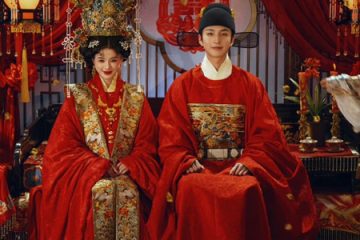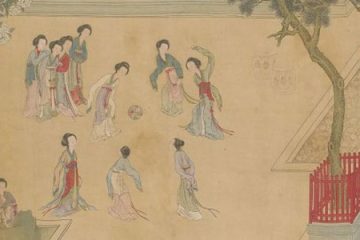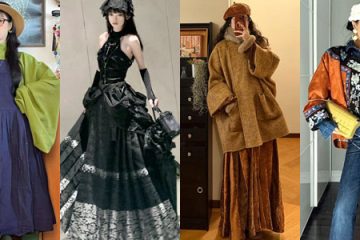How to Choose the Perfect Hanfu for Every Occasion

Hanfu, the traditional clothing of the Han Chinese, has experienced a remarkable resurgence in recent years. Embracing its rich history and elegant aesthetics, more people are incorporating Hanfu into their daily lives and special events. Whether you’re attending a wedding, celebrating a festival, going out casually, or participating in a formal gathering, selecting the perfect Hanfu can enhance your experience and showcase your appreciation for this timeless attire. This comprehensive guide will help you navigate the diverse world of Hanfu, offering insights into styles, fabrics, and selection tips tailored to various occasions.
Understanding Hanfu: A Brief Overview
Before delving into selection tips, it’s essential to grasp what Hanfu represents. Hanfu is characterized by its flowing robes, wide sleeves, and intricate designs, embodying the grace and cultural heritage of the Han Chinese. Different dynasties, from the Han to the Ming, have influenced Hanfu styles, resulting in a variety of silhouettes and embellishments. Modern Hanfu enthusiasts often blend traditional elements with contemporary fashion, making it versatile for various settings.
Selecting Hanfu for Different Occasions
Choosing the right Hanfu involves understanding the event’s nature and selecting styles and fabrics that align with its formality and purpose. Below, we explore how to select Hanfu for weddings, festivals, casual outings, and formal gatherings.
1. Hanfu for Weddings

Weddings are joyous occasions that celebrate union and tradition. Selecting Hanfu for a wedding involves balancing elegance, festivity, and cultural significance.
Styles to Consider:
- Shenyi (神衣): A classic Hanfu style featuring long robes and cross-collared jackets, symbolizing nobility and grace. Ideal for brides seeking a traditional and regal appearance.
- Qixiong Ruqun (齐胸襦裙): Consisting of a short jacket and a skirt that reaches the chest, this style offers a youthful and vibrant look, suitable for brides desiring a fresh and lively aesthetic.
- Fanlingpao (翻领袍): Characterized by a wide collar and flowing sleeves, perfect for brides who prefer a more dramatic and elegant silhouette.
Fabric Suggestions:
- Silk: Renowned for its smooth texture and luxurious feel, silk Hanfu is perfect for weddings, offering both comfort and sophistication.
- Satin: Lightweight and glossy, satin is ideal for adding a touch of glamour to your wedding attire.
- Brocade: Featuring intricate patterns woven into the fabric, brocade Hanfu adds a rich and opulent look, suitable for formal wedding ceremonies.
Color and Embellishments:
- Red and Gold: Traditionally associated with happiness and prosperity, red is a popular choice for wedding Hanfu. Gold accents can add a lavish touch.
- Floral Embroidery: Symbolizing beauty and fertility, floral patterns enhance the romantic vibe of wedding Hanfu.
Accessories:
- Headdresses: Complement your Hanfu with traditional headdresses like the phoenix crown or veil to complete the bridal look.
- Jewelry: Opt for delicate jewelry that complements the Hanfu without overpowering its elegance.
2. Hanfu for Festivals

Festivals are vibrant celebrations that often emphasize cultural heritage and community spirit. Choosing Hanfu for festivals involves selecting comfortable, festive, and expressive styles.
Styles to Consider:
- Ruqun (襦裙): A versatile garment consisting of a short top and long skirt, ideal for active participation in festival activities.
- Duanpao (短袍): A short robe that allows ease of movement, perfect for outdoor festivals and dynamic celebrations.
- Zhongyi (中衣): Intermediate attire that balances formality and comfort, suitable for larger, more traditional festivals.
Fabric Suggestions:
- Cotton: Breathable and comfortable, cotton Hanfu is ideal for daytime festivals and warm weather.
- Linen: Lightweight and durable, linen is perfect for outdoor festivities, offering both comfort and style.
- Velvet: Adds a touch of richness and warmth, suitable for evening festivals or cooler climates.
Color and Embellishments:
- Bright Colors: Festivals are the perfect occasion to experiment with vibrant hues like yellows, blues, and pinks that reflect the celebratory mood.
- Patterned Fabrics: Incorporate bold patterns, traditional motifs, or seasonal themes to express the festival’s spirit.
Accessories:
- Headwear: Simple hair accessories or festive hats can enhance your Hanfu without hindering your activities.
- Practical Footwear: Choose comfortable shoes like embroidered cloth shoes or soft leather shoes that allow you to move freely during festivities.
3. Hanfu for Casual Outings

Casual outings call for Hanfu that is comfortable, stylish, and suitable for everyday activities. Selecting the right Hanfu for casual wear focuses on ease of movement and modern practicality while retaining traditional elements.
Styles to Consider:
- Shenyi: Lightweight versions of Shenyi can be stylish for casual strolls or brunches, maintaining elegance without being overly formal.
- Aoqun (襖裙): A combination of a jacket and skirt, ideal for relaxed settings and daily wear.
- Banbi (半臂): Half-sleeved Hanfu that offers comfort in warmer weather, suitable for outdoor activities and casual meet-ups.
Fabric Suggestions:
- Cotton and Blends: These fabrics offer breathability and ease, making them perfect for daily wear and various weather conditions.
- Chiffon: Light and airy, chiffon Hanfu can add a touch of femininity and grace to your casual look.
- Denim: Modern adaptations include denim Hanfu, providing durability and a contemporary twist for everyday attire.
Color and Embellishments:
- Pastel Shades: Soft colors like light blue, lavender, and mint green are ideal for casual outings, offering a relaxed and approachable appearance.
- Minimal Embroidery: Subtle patterns and minimal embellishment keep the look casual while still honoring traditional craftsmanship.
Accessories:
- Practical Bags: Opt for small backpacks or crossbody bags that complement the Hanfu and are functional for daily needs.
- Simple Jewelry: Delicate necklaces, earrings, or bracelets can enhance your casual Hanfu without overwhelming the outfit.
4. Hanfu for Formal Gatherings

Formal gatherings demand Hanfu that exudes sophistication, elegance, and adherence to traditional norms. Whether it’s a cultural event, academic ceremony, or official function, selecting the appropriate Hanfu is crucial.
Styles to Consider:
- Zhongyi Shenyi (中衣神衣): A formal version of Shenyi with intricate designs and higher-quality fabrics, suitable for official events and ceremonies.
- Tangzhuang (唐装): Inspired by Tang Dynasty fashion, Tangzhuang Hanfu is both formal and stylish, making it appropriate for contemporary formal settings.
- Hanfu Suits: Modern interpretations that combine traditional Hanfu elements with tailored fits, ideal for business-related formal events.
Fabric Suggestions:
- Silk Brocade: For a luxurious and formal appearance, silk brocade Hanfu offers depth and intricate patterns that stand out in formal settings.
- Damask: A heavy, patterned fabric that provides a distinguished look, suitable for high-profile events.
- Organza: Adds a touch of elegance and structure, perfect for formal gatherings that require a polished appearance.
Color and Embellishments:
- Muted and Elegant Colors: Deep blues, blacks, greys, and rich reds convey professionalism and formality.
- Intricate Embroidery: Detailed and sophisticated embroidery can elevate the Hanfu’s status, making it appropriate for formal occasions.
Accessories:
- Traditional Footwear: Opt for elegant embroidered shoes or formal boots that complement the overall formal Hanfu ensemble.
- Headdresses and Capes: Depending on the formality, adding traditional headdresses or formal capes can enhance your formal Hanfu attire.
- Elegant Jewelry: Choose high-quality jewelry pieces, such as jade necklaces or gold bracelets, to add a refined touch to your outfit.
Fabric Selection: The Foundation of Your Hanfu
Selecting the appropriate fabric is fundamental to ensuring comfort, suitability, and elegance for your chosen occasion. Here’s a detailed look at popular fabrics used in Hanfu:
1. Silk
Advantages:
- Luxurious texture and sheen
- Breathable and comfortable in various weather
- Durable with proper care
Best For:
- Weddings
- Formal gatherings
- Evening festivals
2. Cotton
Advantages:
- Highly breathable and comfortable
- Ideal for warm climates and casual wear
- Easy to maintain
Best For:
- Casual outings
- Daytime festivals
- Daily wear
3. Linen
Advantages:
- Lightweight and airy
- High durability
- Excellent for layering
Best For:
- Outdoor festivals
- Casual outings in warm weather
- Comfortable daily wear
4. Satin
Advantages:
- Smooth and glossy finish
- Drapes elegantly
- Adds a touch of glamour
Best For:
- Weddings
- Formal gatherings
- Evening events
5. Brocade
Advantages:
- Rich, intricate patterns
- Sturdy and opulent
- Excellent for structured Hanfu styles
Best For:
- Formal gatherings
- Weddings
- High-end events
6. Velvet
Advantages:
- Soft and plush texture
- Adds a luxurious feel
- Warm and comfortable
Best For:
- Evening festivals
- Formal gatherings in cooler climates
- Winter events
Style Selection: Aligning with the Occasion
Hanfu styles vary significantly, each conveying different levels of formality and cultural significance. Here’s how to align your style selection with the event:
1. Formal vs. Casual Styles
- Formal Styles: Characterized by intricate designs, luxurious fabrics, and traditional silhouettes. Suitable for weddings, official ceremonies, and high-profile gatherings.
- Casual Styles: Simpler designs, comfortable fabrics, and modern adaptations. Ideal for daily wear, casual outings, and relaxed festival participation.
2. Traditional vs. Modern Interpretations
- Traditional Hanfu: Strict adherence to historical designs and construction. Best for cultural events and those seeking an authentic traditional look.
- Modern Hanfu: Incorporates contemporary fashion elements, such as updated cuts, color palettes, and fabric blends. Perfect for blending tradition with modern style in various settings.
3. Color Psychology
- Red: Symbolizes luck and happiness, perfect for weddings and festive occasions.
- Blue: Represents tranquility and is suitable for casual and daytime events.
- Black and White: Convey elegance and formality, ideal for official and formal gatherings.
- Pastels: Offer a soft and approachable look, great for everyday wear and casual outings.
Practical Tips for Choosing the Perfect Hanfu
1. Understand the Occasion
Before selecting a Hanfu, consider the event’s nature, venue, and expected level of formality. This understanding will guide your choice in style, color, and fabric.
2. Consider Your Comfort
Ensure that the Hanfu you choose is comfortable and allows for ease of movement, especially for events that involve dancing, walking, or other activities.
3. Fit and Sizing
Proper fit is crucial for Hanfu to drape gracefully. Pay attention to sizing charts provided by manufacturers and consider custom tailoring if necessary to achieve the perfect fit.
4. Quality of Fabric and Craftsmanship
Invest in high-quality fabrics and well-crafted Hanfu to ensure durability, comfort, and a polished appearance. Check for details like stitching, embroidery quality, and fabric integrity.
5. Accessorize Thoughtfully
Accessories can enhance your Hanfu outfit but should complement rather than overshadow it. Choose accessories that align with the occasion and the Hanfu style you’ve selected.
6. Maintenance and Care
Different fabrics require different care. Ensure you understand how to properly maintain your Hanfu, whether it involves hand washing, dry cleaning, or special storage considerations.
Where to Buy Hanfu
Finding the right Hanfu involves selecting reputable sources that offer quality, variety, and authenticity. Here are some recommendations:
1. Online Retailers
- Etsy: Offers a wide range of handmade and customized Hanfu from various sellers.
- Dedicated Hanfu Websites: Platforms like Hanfu Story, CHAO Fashion, and Grace Garments specialize in Hanfu, providing detailed descriptions and high-quality images.
2. Local Boutiques
Visiting local boutiques that specialize in traditional Chinese clothing allows you to try on different styles and receive personalized assistance in selecting the perfect Hanfu.
3. Cultural Festivals and Events
Hanfu fairs and cultural festivals often feature vendors selling a diverse array of Hanfu, providing an opportunity to see the garments in person and interact with the creators.
4. Custom Tailors
For a personalized fit and unique designs, consider commissioning a custom Hanfu tailor. This option ensures that the garment meets your specific preferences and sizing requirements.
Conclusion
Choosing the perfect Hanfu for every occasion involves understanding the event’s nature, selecting appropriate styles and fabrics, and ensuring comfort and elegance. By considering these factors, you can confidently embrace Hanfu in various settings, celebrating both tradition and personal style. Whether you’re dressing up for a wedding, participating in a vibrant festival, enjoying a casual outing, or attending a formal gathering, the right Hanfu can enhance your experience and honor the rich cultural heritage it represents. Embrace the beauty of Hanfu and let it be a versatile addition to your wardrobe, bridging the past with the present in every special moment.
Frequently Asked Questions (FAQs)
1. What is Hanfu?
Hanfu is the traditional clothing of the Han Chinese, characterized by flowing robes, wide sleeves, and intricate designs that reflect centuries of cultural heritage.
2. How do I choose the right size for Hanfu?
Refer to the sizing charts provided by the retailer and measure your body dimensions accurately. Consider consulting with a tailor for a customized fit.
3. Can Hanfu be worn year-round?
Yes. Different fabrics and styles make Hanfu suitable for various seasons. Choose lightweight fabrics like cotton and linen for warmer weather, and heavier fabrics like velvet and brocade for cooler climates.
4. How should I care for my Hanfu?
Care instructions depend on the fabric. Generally, delicate fabrics like silk require hand washing or dry cleaning, while cotton and linen can often be machine washed on gentle cycles.
5. Are there modern adaptations of Hanfu?
Absolutely. Modern Hanfu blends traditional elements with contemporary fashion, featuring updated cuts, diverse color palettes, and versatile fabrics suitable for everyday wear.
6. Where can I learn more about Hanfu culture?
Numerous online resources, books, and community groups focus on Hanfu culture. Participating in local Hanfu meetups or cultural events can also provide deeper insights.



0 Comments